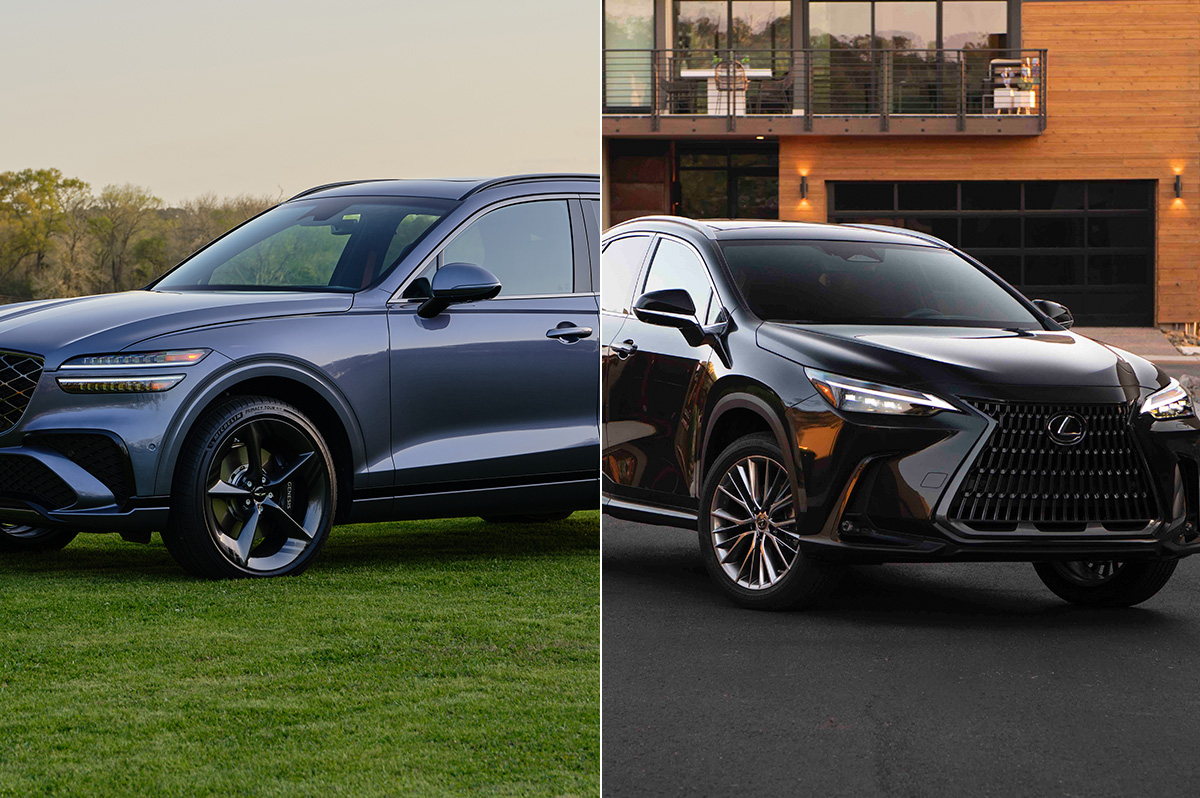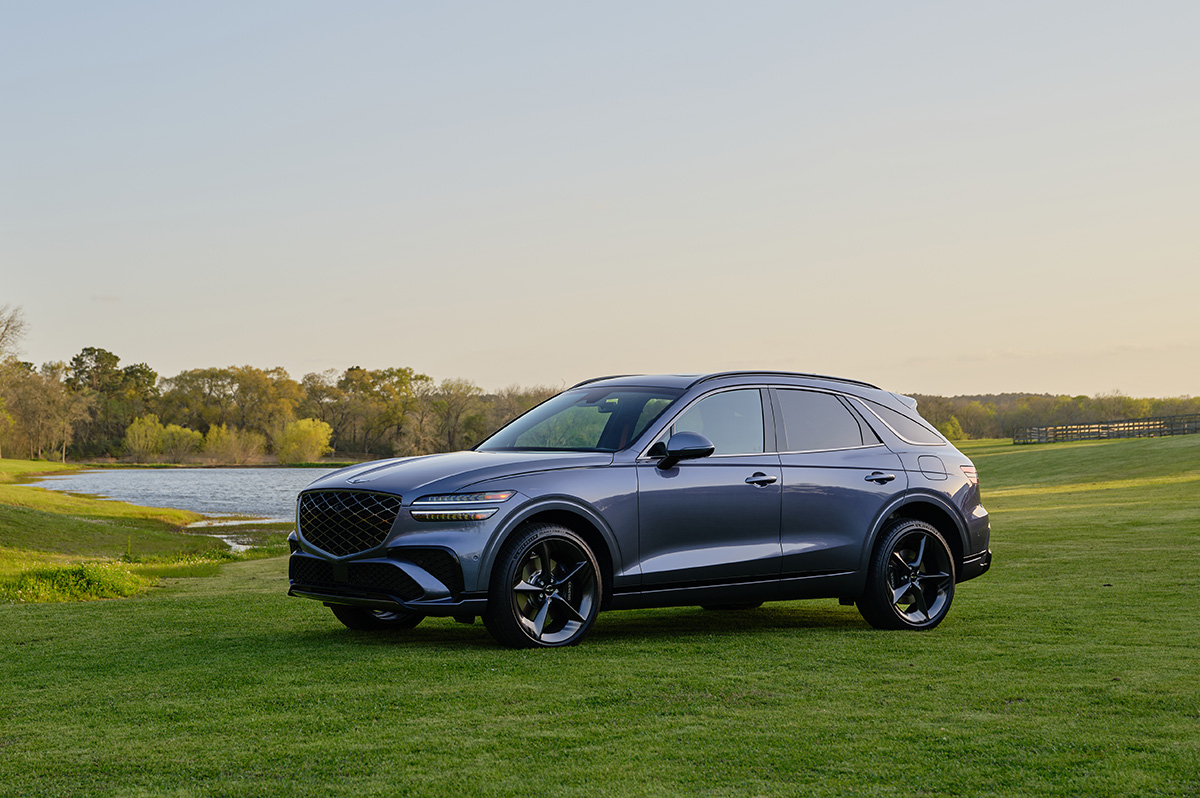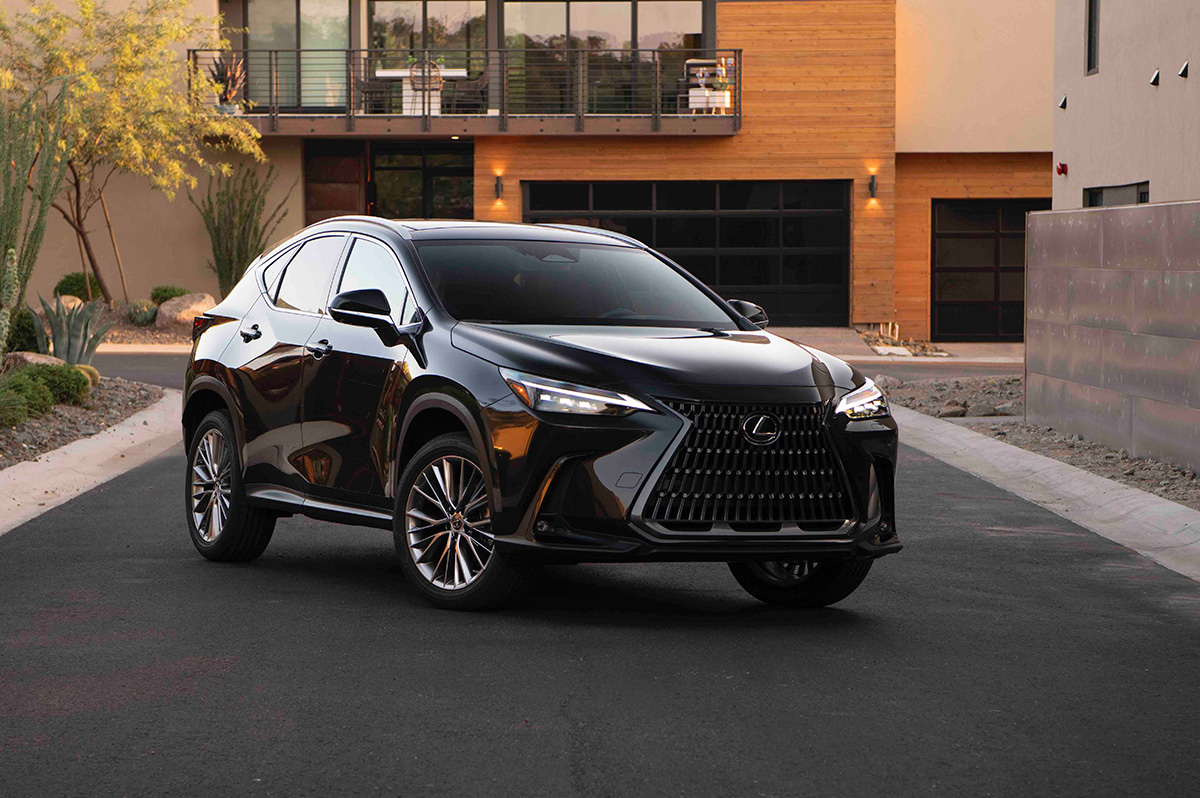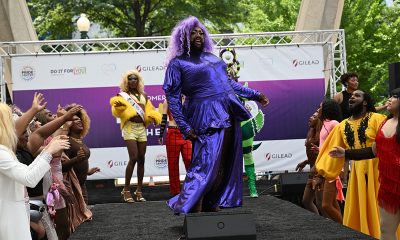Living
Queery: Ba’Naka/Dustin Schaad
The local drag favorite answers 20 gay questions

Dustin Schaad — aka Ba’Naka — came to Washington in the winter of 2003 during a rough time in his life. He’d been through a breakup, couldn’t afford college and was on the outs with his parents, so he came to stay with an aunt who was here and life started improving.
The 25-year-old Bradenton, Fla., native had already started dabbling in drag. He’d been doing drag shows at a place called Triangles in Sarasota, Fla., a few nights a week. When he got to Washington, local drag legend Kristina Kelly took him under her wing and he started appearing with her at Omega and Apex occasionally then as a regular at BeBar in 2007.
As Ba’Naka — whose name came about during a middle-of-the-night Wal-Mart confrontation in his home state — Schaad’s drag star has only risen. Ba’Naka is a regular at Town and just won the drag queen favorite award in the Blade’s annual “Best Of” readers’ poll. With Town cohort Shi-Queeta-Lee, Ba’Naka was on “America’s Got Talent” a few years ago.
“Ba’Naka and Dustin are really the same people,” Schaad says. “We’re both loud and boisterous and in some ways I’m even more comfortable going out as her. Drag queens can get away with murder — all kinds of stuff I could never get away with as Dustin.”
Schaad says drag is an art form and that the LGBT community at large should appreciate queens more.
“I always remind people it was a drag queen who threw the first brick at Stonewall so everybody enjoying their gay life today has a drag queen to thank.”
By day Schaad is a buyer for Universal Gear where he’s worked for about seven years. He likes working there but also fantasizes about doing drag — which he calls a passion — full time.
Schaad enjoys fashion design, art, movies, shopping and travel and lives in Silver Spring. He’s single and now on good terms with his parents, grandparents and four younger sisters. Since he works in gay clubs — Ba’Naka co-hosts the package contest on Thursdays at Cobalt in addition to her work at Town — he can often be found on off nights at Stetson’s, a straight bar on U Street. (Washington Blade photo by Michael Key)
How long have you been out and who was the hardest person to tell?
I came out when I was 15. The hardest person I came out to is a tie between my Grandmothers Hazel and Rose. I was afraid to tell them because these women were my rocks growing up and I was afraid that they would disapprove. I was blessed that they both accepted me with open arms.
Who’s your gay hero?
Lena Lett — she’s clever, witty and has a tongue sharper than a Ginsu knife but she is also a beacon of compassion and generosity, who’s given me many pearls of wisdom over the years.
What is Washington’s best nightspot, past or present?
Of course I love where I work, Cobalt and Town, but some of my fondest nightlife memories, as blurry as they may be, are from the old BeBar Days circa ’07. I had so much fun, often followed by the worst hangovers imaginable.
Describe your dream gay wedding.
One in which I have all of my friends and family and a man that I am head over heels for — and a 29-inch waist! (Note that I will NOT have a tacky beach wedding or wear white, I mean let’s be honest.)
What non-gay issue are you most passionate about?
Prepping for the Zombie-Apocalypse … girl, I am stock piled on canned foods and have a fabulous pair of thigh-high combat boots on order.
What historical outcome would you change?
The 2000 presidential election results because seriously we all could have done without the pain, fear and suffering brought on by eight years of Bush.
What’s been the most memorable pop culture moment of your lifetime?
The Britney/Madonna kiss … come on! Scandalous!
On what do you insist?
Condoms … men are dogs, they tend to roam and I don’t want fleas brought home.
What was your last Facebook post or Tweet?
“The maid alphabetized my porn! Good for her!”
If your life were a book, what would the title be?
“Taffeta & Shattered Dreams: My life in the Tragic Queendom.”
If science discovered a way to change sexual orientation, what would you do?
I would personally lead a One Queen Revolution against it! I was born gay and I love my life … I wouldn’t want to be any other way.
What do you believe in beyond the physical world?
Really? You’re asking a drag queen about her meta-physical philosophies? No one cares what I think. Ask me about glitter and shiny things!
What’s your advice for LGBT movement leaders?
Cut the crap, drop the egos. Equality is an American birthright. Focus on that.
What would you walk across hot coals for?
Justin, the love of my life. He passed away this year and I would do anything to bring him back.
What gay stereotype annoys you most?
Gay stereotypes don’t annoy me; I find them hysterical!
What’s your favorite gay movie?
“Spice World.” If that’s not a gay movie I don’t know what is.
What’s the most overrated social custom?
Trust. Wait, does that make me cynical?
What trophy or prize do you most covet?
Ha! Don’t laugh, but my Pinewood Derby trophy from Cub Scouts. This sissyboy showed those manly men how it was done!
What do you wish you’d known at 18?
That my metabolism would betray me age 23.
Why Washington?
I moved to D.C. in 2003 after high school. I had broken up with my boyfriend, I couldn’t afford college on my own and I desperately needed to get out of Florida. I had an aunt who lived up here and offered me a way out and I moved up and started a new adventure. I fell in love with D.C. because it gave me the chance at a new start. I love this city and I love our LGBT community. It’s home!

Did you melt like the Wicked Witch of the West this week?
As summer temperatures rise, keeping your home or apartment cool during a heat wave can become both a comfort issue and a financial challenge. One of the most effective ways to keep a home cool is to prevent heat from entering in the first place. Sunlight streaming through windows can significantly raise indoor temperatures. Consider the following solutions:
• Close blinds or curtains during the hottest parts of the day. Blackout curtains or thermal drapes can reduce heat gain by up to 30%.
• Install reflective window films to block UV rays and reduce solar heat without sacrificing natural light.
• Use outdoor shading solutions such as awnings (yes, the ones you removed because they were “dated”) and shutters to limit direct sunlight.
Fans are a cost-effective way to circulate air and create a wind-chill effect that makes rooms feel cooler.
• Ceiling fans should rotate counterclockwise in the summer to push cool air down.
• Box fans or oscillating fans can be placed near windows to pull in cooler evening air or push hot air out.
• Create a cross-breeze by opening windows on opposite sides of your home and positioning fans to direct airflow through the space.
• For an extra cooling effect, place a bowl of ice or a frozen water bottle in front of a fan to circulate chilled air.
To optimize natural ventilation, open windows early in the morning or late in the evening when outdoor temperatures drop. This allows cooler air to flow in and helps ventilate heat that built up during the day.
Appliances and electronics generate a surprising amount of heat. To reduce indoor temperatures:
• Avoid using the oven or stove during the day; opt for no-cook meals, microwave cooking, or grilling outside.
• Run heat-producing appliances like dishwashers and clothes dryers in the early morning or late evening.
• Unplug electronics when not in use, as even standby power can add heat to your space.
• Switching to energy-efficient LED lightbulbs can also reduce ambient heat compared to incandescent lighting.
If you do use an air conditioner, maximize its effectiveness by:
• Setting it to a reasonable temperature—around 76–78°F when you’re home and higher when you’re away.
• Cleaning or replacing filters regularly to maintain airflow and efficiency.
• Sealing gaps around doors and windows to prevent cool air from escaping. (Didn’t we all have a parent who said, “Close the door. You’re letting all the cool out?”)
• Using a programmable thermostat to optimize cooling schedules and reduce energy use.
If it is not cost-prohibitive, adding insulation in attics and walls can greatly reduce heat transfer. Solar panels that reflect heat can also help, as well as offset the cost of their installation. Adding weatherstripping around doors and windows, sealing cracks, and using door sweeps can make a significant difference in keeping heat out and cool air in.
Natural and eco-conscious methods can also help cool your home.
• Snake plants, ferns, or rubber trees can improve air quality and slightly cool the air through transpiration.
• White or reflective roof paint can reduce roof temperatures significantly.
• Cooling mats or bedding can make sleeping more comfortable without cranking up the A/C.
For renters or those who can’t make permanent modifications, there are still plenty of ways to keep cool.
• Use portable fans and A/C units instead of built-in systems, making sure they are the correct size for your space.
• Removable window film or static cling tinting can reflect heat without violating your lease.
• Install tension rod curtains or temporary blackout panels instead of hardware-mounted window coverings.
• Add draft blockers and weatherstripping tape that can be applied and removed without damage.
• Cover floors with light-colored rugs to reflect heat rather than absorb it.
• If allowed, use temporary adhesive hooks to hang reflective materials or light-filtering fabrics over windows.
Even if your space is warm, you can still take steps to help your body stay cool.
• Wear light, breathable fabrics like cotton or linen.
• Stay hydrated and avoid caffeine or alcohol during peak heat hours.
• Take cool showers or use damp cloths on your neck and wrists to bring your body temperature down.
Keeping your home or apartment cool in the summer doesn’t have to be expensive or energy-intensive. With a few adjustments such as blocking sunlight, optimizing airflow, using fans effectively, and making renter-friendly upgrades, you can create a more comfortable indoor environment while keeping energy bills in check.
Valerie M. Blake is a licensed Associate Broker in D.C., Maryland, and Virginia with RLAH @properties. Call or text her at 202-246-8602, email her at DCHomeQuest.com, or follow her on Facebook at TheRealst8ofAffairs.
Real Estate
The world’s on fire and D.C. is on sale (sort of)
Prices are up, but then again, nothing makes sense anymore

ICE is disappearing people, revered government agencies are shuttering, and who knows if we’ll be in World War III next week? But can you believe prices in D.C. are actually still up 6.3% since last year? It doesn’t make sense, and perhaps that does make sense, because nothing seems to make any sense any more.
That said, there are some parts of our market that are truly suffering. The interest rates, which have been up, up, up for about four years now, are the ongoing rain on our market’s military parade. Combine that with 75,000 federal employees taking a buyout nationwide, and DOGE cuts eliminating around 40,000 federal jobs in the District (per estimates by the D.C. CFO), not to mention thousands of other job losses in non-governmental organizations due to funding and program cuts, and you’ve got a case of uncertainty, and downright unaffordability in the pool of otherwise would-be buyers.
This has had a marked impact on properties that starter-home buyers and low- to mid-level employees would otherwise buy, most notably condominium and cooperative apartment units. These properties have already slowed in our market thanks to the profound impact that higher interest rates have had on their monthly carrying costs—pair that with job insecurity, and a lot of condos are proving to be very difficult to sell indeed.
So how is the average sale price up in our market?
The increase is almost entirely due to the resounding strength of the single-family home market, especially in upper Northwest D.C., where it is still quite common to see bidding wars, even on properties pushing past the $3M mark. It seems that buyers in that echelon are less impacted by a few percentage points in the interest rate, and less concerned about their job security. Notably, those buyers are often married with children and have an absolute need for more space, must stay in the area due to one spouse’s job, or the kid’s friend group, regardless of whether the cost of owning is thousands of dollars more per month than it would have been in 2020 or 2021. The continued appreciation in these neighborhoods defies imagination.
So, what to do if you are not one of those lucky enough to be shopping for a $3M home? The short answer: wait. If you want more space, rent your current place out and learn the joys of being a landlord while someone else pays your mortgage. Need the equity from your current home to buy your next place? Get a home equity line of credit, or loan, and pull the equity out of your current place to buy the next one. Or—and I have never recommended this before in 21 years of being a Realtor—rent for a few years. Sure, I’d love to list and sell your condo so you can climb the real estate ladder, but it might just be a waste of time, money or both if you could just ride out this storm and sell in a DOGE-less future.
All this said, there are some condos that seem to be immune from this recent negative news. Anecdotally, it feels like it’s the truly special ones that do just fine no matter the market. Our recent listing in Capitol Hill had a view from every one of its 15 windows of the Supreme Court. Sold in five days with six offers. Another condo was on the top two floors of a townhouse and had the coolest black wood floors that gleamed like a grand piano. Sold in four days at full price.
So, all is not for naught if you have a condo or home in an area that people want to be in, with nice space, light, amenities and a certain je ne sais quois. And, as long as we have a democracy in a few years, my experience says our market will be back, stronger than ever, really soon.
David Bediz is a Realtor and mortgage loan broker for the Bediz Group LLC and Home Starts Here, LLC. Reach him at [email protected].

In this corner, there’s the Genesis QV70, newly updated and full of glitzy gizmos. And in the opposing corner, there’s the Lexus NX, a fan fave known for comfort and reliability.
Both are strong contenders. Both have proven to be equally adept at bobbing and weaving through traffic. And both can go toe to toe with pricier competitors.
And yet, what would happen when they sparred against each other? Here’s your ringside seat to find out.
GENESIS QV70

$50,000
MPG: 22 city/28 highway
0 to 60 mph: 5.9 seconds
Cargo space: 28.9 cu. ft.
PROS: Stylish. Good value. Lots of standard amenities.
CONS: So-so fuel economy. Quirky dash controls.
IN A NUTSHELL: When it comes to speed, the Genesis QV70 is faster on its feet than the Lexus NX. Neither of these crossover SUVs is a lightweight, but the QV70 offers more potent powerplants—including an all-electric version that zips from 0 to 60 mph in just 3.8 seconds. In other words, Porsche Macan S territory.
The two gas-powered options—a four-cylinder turbo and twin-turbo V6—also got my blood pumping. So did the velvetlike suspension mixed with deft handling and stop-on-a-dime braking. But this adrenaline rush comes at a cost: sacrificing fuel economy.
As for the automaker’s design philosophy—“athletic elegance”—it’s on full display here: an oversized grille inspired by the Genesis emblem, the dramatically arcing silhouette, and those distinct quad headlights and taillights. It’s not easy to stand out when 25% of all vehicles sold in the U.S. are compact crossovers, so kudos to the QV70 for being such a head-turner.
The mod-yet-minimalist styling carries over to the cabin, with its high-quality materials: real-wood accents, soft-touch plastics and a tasteful glass shift knob. New this year is a sweeping 27-inch dashboard monitor, which houses the gauge cluster and infotainment touchscreen. Alas, this display is positioned a bit far from the driver (though I must admit reaching for it did help stretch a few tight back muscles).
Instead of being a costly extra, this gigantic monitor comes standard. So do synthetic leathers seats, nine-speaker stereo, smartphone/wireless connectivity, hands-free liftgate, tons of safety gear and more. Options include a panoramic sunroof, three-zone climate control, 16-speaker Bang & Olufsen audio, synthetic suede headliner, sound-reducing rear windows, automated parking and other goodies.
What’s the score so far? Despite some minor quibbles, the Genesis QV70 is a worthy challenger that pulls no punches.
LEXUS NX

$43,000
MPG: 26 city/33 highway
0 to 60 mph: 8.2 seconds
Cargo space: 22.7 cu. ft.
PROS: Fuel efficient. Comfy seats. Rock-solid reliability.
CONS: Pokey base model. Limited rear storage.
IN A NUTSHELL: Sure, the Lexus NX isn’t as speedy as the Genesis QV70. But, as with the tortoise and the hare, sometimes slow and steady wins the race. And really, it’s only the entry-level NX that feels sluggish, such as when trying to quickly merge into freeway traffic.
Other trim levels, including two hybrid options, are just fine. And no matter the engine choice, the counterpunch here is that these vehicles get better gas mileage: 20% higher fuel economy than in either the four-cylinder or V6 in the Genesis. The two NX hybrids are even more green, with the high-end plug-in version able to travel up to 37 miles on electric power alone. One downside: There is no all-electric NX—well, at least not yet.
As with parent-company Toyota, Lexus offers stellar vehicle reliability—often ranked No. 1 in dependability and crash-test surveys year after year. Lexus vehicles generally hold their value better than Genesis, because this newer brand has a shorter history. Lexus also has a larger dealer network, though the number of Genesis dealerships is growing.
But when it comes to cargo space, the NX is about two inches shorter and narrower than the QV70, which has more stowage area. And Genesis handling is sportier, though the Lexus feels sure and well-grounded.
Luxe interior amenities are basically the same in both vehicles. But interior styling in the QV70 is trendy, while the NX is more understated. In other words, a choice between sassy and classy.
This is a very competitive vehicle segment, with Euro models like the Audi Q5, BMW X3 and Mercedes GLC also duking it out in what seems like a clash of the titans.
But as for the Genesis QX70 or Lexus NX, which is the winner? For me, both are real knockouts—so I’d call it a draw.













